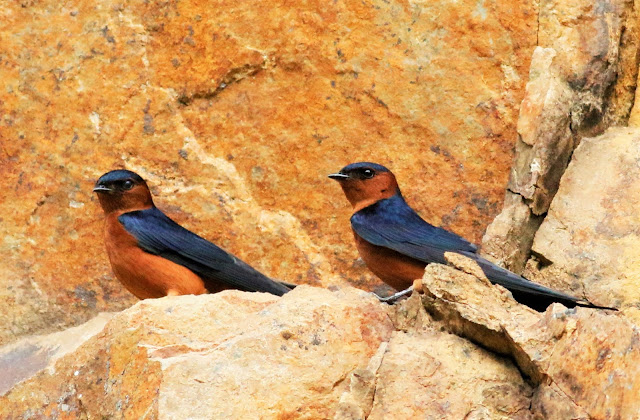There are many things in the universe which science has yet to find an answer - like why some people do not like to put on the indicator light when changing lanes? or why it appears that Singapore has more rare birds visiting them frequently? or perhaps why all planets are round and not square or triangle in shape? When science can't find an answer to a phenomenon then the spiritual perspective will usually fill the void.
Unlike some migrants birds which may have took off as early as February, some of them have preferred to stay a little bit longer - either due to the reason that they have arrived later during the autumn migration or perhaps they are filling their fats and strengthening their flight muscle before embarking their arduous journey home. Here are some of the migrant birds which are still around in mid February:
 |
| Common Kestrel (Falco tinnunculus) - female |
What a beauty ! Basking herself in the glory of the early morning sun rays.
 |
| Eastern Marsh Harrier (male) |
This is what happens when you have forgotten to change the aperture in your camera otherwise it would have been a splendid photo.
The same bird as it flew further away.
 |
| Pied Harrier (female) |
She is scheming the weeds below for her first morning meal.
 |
| Common Stonechat / Siberian Stonechat (male) |
Did you just said i am from Siberia?
Here is another male common stonechat which was seen not too far from the first one. This one appears like having some new and fresh feathers sprouting out near its rump.
How do you differentiate between a male Oriental Pipit and a female Oriental Pipit? Well just look at their legs. This one i think is most likely a female.
This one appears to have a longer snout and beak but since i have not mastered the features of a Richard's Pipit, i will just named it as an Oriental Pipit as well.
This shrike has also yet to depart for home.
Here are some of the resident birds which are equally stunning.
It stayed motionless like this for close to 10 minutes but eventually it still missed catching the prey.
They are a pair i believe.
This one appears to have a longer snout and beak but since i have not mastered the features of a Richard's Pipit, i will just named it as an Oriental Pipit as well.
 |
| Brown Shrike |
Here are some of the resident birds which are equally stunning.
 |
| Purple Heron |
 |
| Little Grebe |
Its not easy to photograph them in flight. This one was just one lucky shot.
Here is one which i have not seen before - a leucistic Yellow-Vented Bulbul !
Despite its condition, it still retains its yellow vent. There have been a few reported cases of leucistic Yellow Vented Bulbul in this region and i believe Wong Tsu Shi has also photographed one in Sabah. Why is this bulbul species are so prone to deficiency of melanin ? You might just need to ask the bird scientist.
HAPPY BIRDING !









































